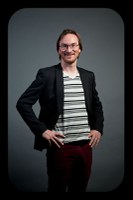ABSTRACT
What is an instrument in our increasingly electrified world? In this talk I will present a set of theoretical building blocks from my forthcoming book on "musicking in an electronic world". At the core of the argument is the observation that the introduction of new music technologies has led to an increased separation between action and sound in musical performance. This has happened gradually, with pianos and organs being important early examples of instruments that introduced mechanical components between the performer and resonating objects. Today's network-based instruments represent an extreme case of a spatiotemporal dislocation between action and sound. They challenge our ideas of what an instrument can be, who can perform on them, and how they should be analyzed. In the lecture I will explain how we can use the concepts of action-sound couplings and mappings to structure our thinking about such instruments. This will be used at the heart of a new organology that embraces the qualities of both acoustic and electroacoustic instruments.
BIOGRAPHY
 Alexander Refsum Jensenius is a music researcher and research musician, and is currently the Deputy Director of RITMO Centre for Interdisciplinary Studies in Rhythm, Time and Motion at the University of Oslo. His research focuses on why music makes us move, and how we can use the human body in musical interaction. He also designs, builds, and performs traditional and very untraditional instruments. As chair of the steering committee of the International Conference on New Interfaces for Musical Expression (NIME), he is a leading figure in the international music technology community.
Alexander Refsum Jensenius is a music researcher and research musician, and is currently the Deputy Director of RITMO Centre for Interdisciplinary Studies in Rhythm, Time and Motion at the University of Oslo. His research focuses on why music makes us move, and how we can use the human body in musical interaction. He also designs, builds, and performs traditional and very untraditional instruments. As chair of the steering committee of the International Conference on New Interfaces for Musical Expression (NIME), he is a leading figure in the international music technology community.
